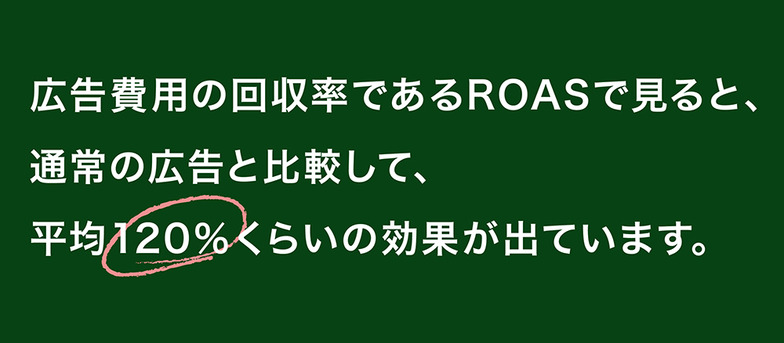Nextedge Dentsu Inc. specializes in performance advertising. This time, we spoke with Kensuke Iseda, responsible for strategy development, and Yu Saito, handling on-site operations, about the latest trends and case studies in retargeting advertising.
*Nexedge Dentsu Inc. became "Dentsu Digital Inc." on July 1, 2016.

Who are the 95% who leave? Retargeting begins with analyzing them.
──First, please tell us about your respective roles.
Isetada: I handle strategy and operational management for performance-based advertising. Additionally, as needed, I provide proposals for initiatives that may extend beyond digital advertising, such as business strategy and problem-solving.
Saito: I handle on-site operations. I propose and implement approaches for managing performance-based advertising, deciding which menus to implement, and strategies for maximizing results. Regarding retargeting advertising, the theme of this discussion, I focus on it as a particularly crucial strategy for maximizing advertising results and growing our clients' businesses.
──In the digital marketing world, it's said that "over 95% of visitors leave without taking action"...
Isetada: That's correct. I believe it's meaningful to analyze why 95% leave without taking action, who these visitors are, and conversely, who the 5% who do take action are and what behaviors they exhibit. This analysis helps us develop retargeting ad strategies to bring back those who left.
──What kind of analysis do you perform?
Isetada: We use access analytics to examine navigation patterns within the site and exit points. We also cross-reference with third-party data to verify who is visiting.
Third-party data refers to anonymized data provided by media outlets or companies that hold it. This includes anonymized data from users who have permitted tracking of their on-site behavior, or data from users who have consented to linking survey responses with their web activity. This data provides highly accurate information about user attributes and behavior.
Additionally, we utilize user data estimated by entities like Yahoo! and Google. While neither allows for individual identification, we use this data for analysis as demographic information and data on interests and preferences.
──Could you tell us about recent trends in retargeting ads?
Saito: In earlier retargeting ads, two main points were emphasized. One was page depth—specifically, which pages users visited: the homepage, product pages, etc. The other was the time since the visit. Generally, the day of the visit is when conversion is most likely, but the challenge lies in optimizing for different time periods: 3 days later, 7 days later, 30 days later, and so on.
The recent trend is moving away from manually setting segments and delivering ads. Instead, there's a growing tendency to automate the targeting, ad bid amounts, and even the creative assets themselves.
Creatives automatically generated from data feeds perform well.
──Does creative automation mean automatically generating banners and such?
Saito: More than banners, it uses data feeds containing product images, prices, names, descriptions, etc., to automatically generate ad creatives. Since this approach actually drives results more effectively, creative automation is becoming the trend.
—I see, like ads that show products you recently viewed. What specific methods are used?
Isetada: One industry well-suited for automated creatives is multi-product e-commerce sites. Beyond just showing ads for products recently viewed, there are also more complex algorithmic approaches.
You know how e-commerce sites show recommendations like "Customers who bought this also bought..."? Similar to these recommendations, there's a technique called dynamic retargeting. It selects products likely to interest users who are browsing across various items and dynamically generates creatives based on that.
──You mentioned it's highly effective. How does it compare to standard retargeting ads in terms of revisit rates and conversions?
Saito: Comparing revisit rates is difficult, but looking at ROAS (Return On Advertising Spend), it shows about 120% effectiveness on average compared to regular ads. The trend toward automation stems from this high effectiveness.


──In which industries is it particularly used?
Isetada: Beyond multi-product e-commerce sites, it's also mainstream in travel and rental real estate. It's a good fit for industries where users are searching for specific products and the business offers a large selection of similar items.
For example, with rentals, there are many properties. Instead of manually creating creatives for each one, it's clearer and easier to promote the product by combining and displaying existing images.
Additionally, products with low unit prices, high purchase frequency, or short consideration periods tend to achieve high CVR (conversion rates). While daily necessities might seem unexpected, more users are buying heavy items like rice and water online, and retargeting is proving effective here too.
Regarding automation, it's used not only for creatives but also for setting target users. However, relying too heavily on automation can be risky.
Maximizing Ad Effectiveness. But Why We Stopped That Setting
──What specific dangers does automation pose?
Isetada: As an advertising platform, Google in particular has advanced targeting optimization, allowing you to set up campaigns to maximize conversions. This can lead to ads being concentrated on people who are likely to repeat purchases, skewing the audience towards existing customers.
From the perspective of a client's business growth, it's essential to retain customers who have only made one or two purchases. However, with automated targeting, messages often fail to reach these customers. Even if the ad metrics show high numbers, analysis sometimes reveals that these campaigns aren't leading to the retention of new customers.
Therefore, we need to use non-automated methods to deliver messages to users who haven't yet become loyal customers.


──What methods are used for ad delivery targeting non-established users?
Saito: We sometimes finely adjust the settings of automated optimization features. Alternatively, we manually create creative content designed to encourage first-time actions or second-time actions and reach them directly.
──How often do you measure effectiveness and review campaigns?
Saito: For ad reviews, we analyze as frequently as weekly or biweekly, issuing reports accordingly. On the other hand, we analyze customer retention and similar metrics over slightly longer spans, such as monthly or quarterly.
──In the latter half, we'll explore client needs and the corresponding approaches.
< Continued in Part 2 >










